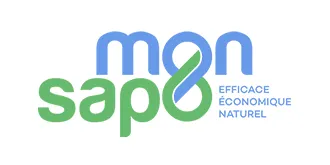Résultat de votre recherche
17 annonces disponibles aujourd'hui

Deep learning for 2D Fluorescence. Data processing optimization on black plastics for classification/quantification dedicated to recycling applications
IFP Energies nouvelles - Lyon
Stage Chimie Rhône entre février et juillet 2025 6 mois

Offre de Stage en Chimie - Projet Sapocircle
MONSAPO
Stage Chimie Essonne entre janvier et mars 2025 de 2 à 6 mois

Modélisation numérique 3D de la dispersion de polluants émis par le transport maritime et étude de l'impact sur la qualité de l'air
IFP Energies nouvelles - Sciences et Technologies du Numérique
Stage Chimie Hauts-de-Seine entre janvier et avril 2025 5 mois

Experimental and CFD Study of Fluid-inserts interaction and heat transfer in single-phase and two-phase flow in a heat exchanger equipped with rotating inserts
IFP Energies nouvelles - Lyon
Stage Chimie Rhône entre janvier et octobre 2025 de 5 à 6 mois

Développement d'une méthode d'écoconception dédiée aux systèmes innovants de captage du CO2
IFP Energies nouvelles - Direction Economie et Veille
Stage Chimie Hauts-de-Seine entre février et mars 2025 de 3 à 4 mois

Développement et Implémentation de Méthodologies de Versioning pour le Management des Données Issues de Procédés Chimiques
IFP Energies nouvelles - Lyon
Stage Chimie Rhône entre février et août 2025 6 mois

Élimination de composés organo-chlorés par extraction liquide-liquide pour le recyclage de plastiques (BUT2)
IFP Energies nouvelles - Lyon
Stage Chimie Rhône entre mars et juillet 2025 de 2 à 3 mois

Méthodologie de test de moussabilité d'une solution de PFAS en vue de la création d'une Base de Données (BUT 2)
IFP Energies nouvelles - Direction Physico-chimie et Mécanique appliquées
Stage Chimie Hauts-de-Seine entre avril et mai 2025 de 2 à 3 mois

Modeling of a pilot-scale hydrocracking unit with recycle
IFP Energies nouvelles - Lyon
Stage Chimie Rhône entre février et août 2025 6 mois

Towards the upgrading of plastic pyrolysis oil: Understanding of the recombination reaction between olefin and hydrochloric acid
IFP Energies nouvelles - Lyon
Stage Chimie Rhône entre mars et août 2025 6 mois

Development of CFD multiphysics solvers for plastic waste recycling applications
IFP Energies nouvelles - Lyon
Stage Chimie Rhône entre janvier et juillet 2025 6 mois

Caractérisation par spectroscopie Raman des matériaux de batteries
IFP Energies nouvelles - Lyon
Stage Chimie Rhône entre février et juillet 2025 de 5 à 6 mois

Etude de la cristallisation d'hydrates de CO2 par microfluidique
IFP Energies nouvelles - Direction Physico-chimie et Mécanique appliquées
Stage Chimie Hauts-de-Seine entre février et avril 2025 6 mois

Développement de méthode d'analyse et mesures de gaz dissous en contexte de fuite d'H2
IFP Energies nouvelles - Direction Sciences de la Terre et Technologies de l’Environnement
Stage Chimie Hauts-de-Seine entre février et mars 2025 5 mois

Apport de la chémoinformatique pour évaluer l'impact des composés traces dans les fluides
IFP Energies nouvelles - Mobilité et Systèmes
Stage Chimie Hauts-de-Seine entre janvier et juillet 2025 6 mois






